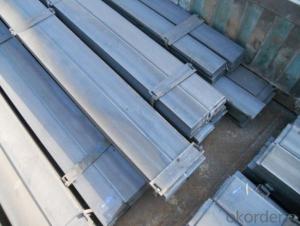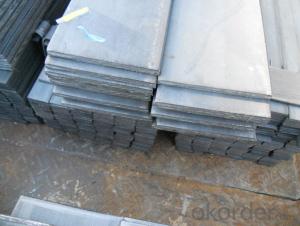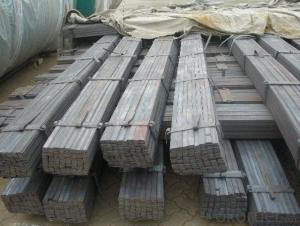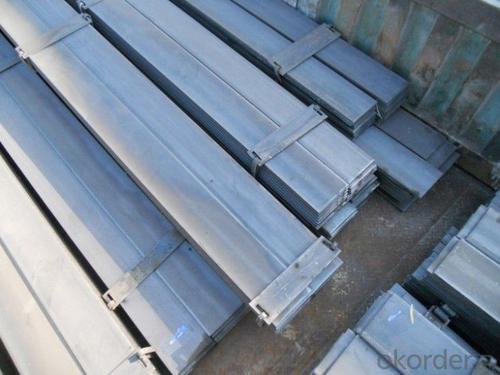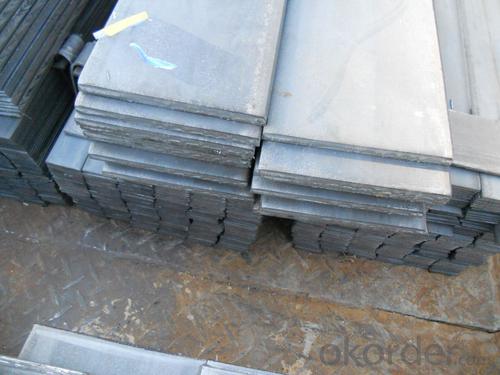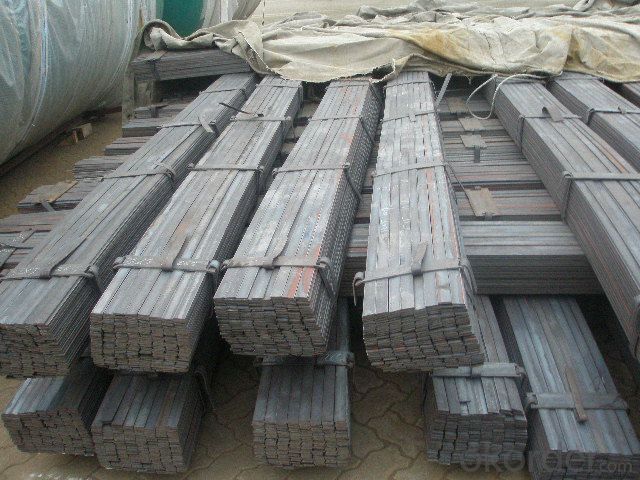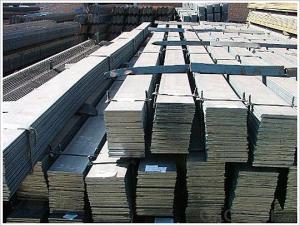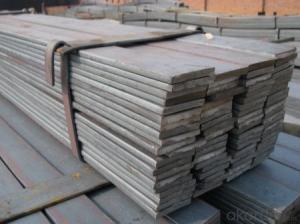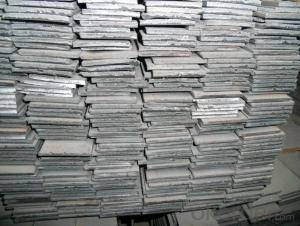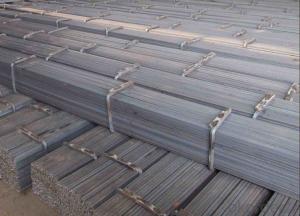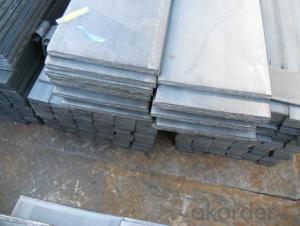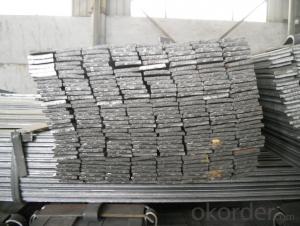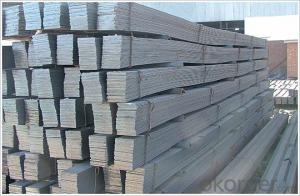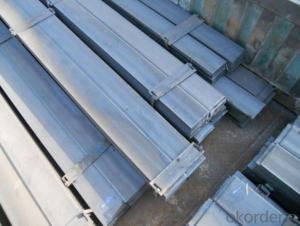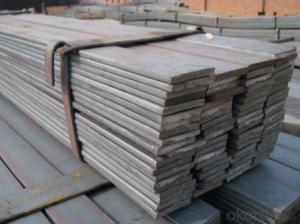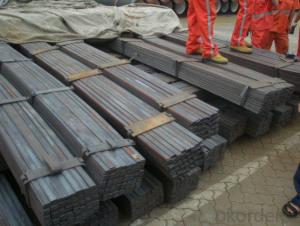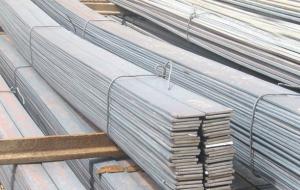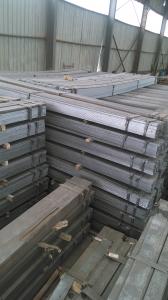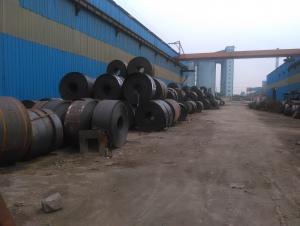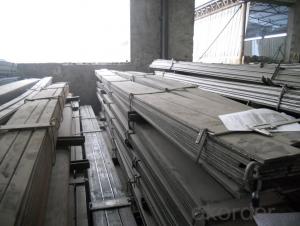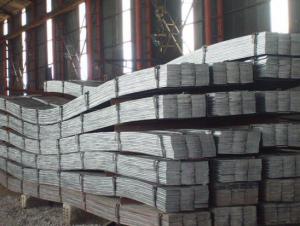Slit Cutting Flat Bar in Q235B with High Quality and Best price
- Loading Port:
- Tianjin
- Payment Terms:
- TT OR LC
- Min Order Qty:
- 25 m.t.
- Supply Capability:
- 10000 m.t./month
OKorder Service Pledge
OKorder Financial Service
You Might Also Like
Product Description:
OKorder is offering high quality Slit Cutting Flat Bar at great prices with worldwide shipping. Our supplier is a world-class manufacturer of steel, with our products utilized the world over. OKorder annually supplies products to European, North American and Asian markets. We provide quotations within 24 hours of receiving an inquiry and guarantee competitive prices.
Product Applications:
Slit Cutting Flat Bars are ideal for structural applications and are widely used in the construction of buildings and bridges, and the manufacturing, petrochemical, and transportation industries.
Product Advantages:
OKorder's Slit Cutting Flats Barare durable, strong, and resist corrosion.
Main Product Features:
· Premium quality
· Prompt delivery & seaworthy packing (30 days after receiving deposit)
· Corrosion resistance
· Can be recycled and reused
· Mill test certification
· Professional Service
· Competitive pricing
Product Specifications:
Manufacture: Slit Cutting
Grade: Q195 – 235
Certificates: ISO, SGS, BV, CIQ
Length: 6m – 12m, as per customer request
Packaging: Export packing, nude packing, bundled
Chemical composition of Q235
Alloy No | Grade | Element(%) | ||||
C
| Mn
| S
| P
| Si
| ||
Q235
|
B
|
0.12—0.20 |
0.3—0.7 |
≤0.045 |
≤0.045
|
≤0.3
|
Physical properties of Q235
Alloy No | Grade | Yielding strength point(Mpa) | Tensile strength (Mpa) | Elongation after fracture(%) | ||||||
Thickness (mm) | Thickness (mm) | |||||||||
≤16 | >16--40 | >40--60 | >60--100 | ≤16 | >16--40 | >40--60 | >60--100 | |||
≥ | ≥ | |||||||||
Q235 |
B |
235 |
225 |
215 |
205 |
375--500 |
26 |
25 |
24 |
23 |
FAQ:
Q1: Why buy Materials & Equipment from OKorder.com?
A1: All products offered byOKorder.com are carefully selected from China's most reliable manufacturing enterprises. Through its ISO certifications, OKorder.com adheres to the highest standards and a commitment to supply chain safety and customer satisfaction.
Q2: How do we guarantee the quality of our products?
A2: We have established an advanced quality management system which conducts strict quality tests at every step, from raw materials to the final product. At the same time, we provide extensive follow-up service assurances as required.
Q3: The products are invoicing on theoritical weight or on actual weight?
A3: We can do it in both manners, according to the customers' request.
Images:
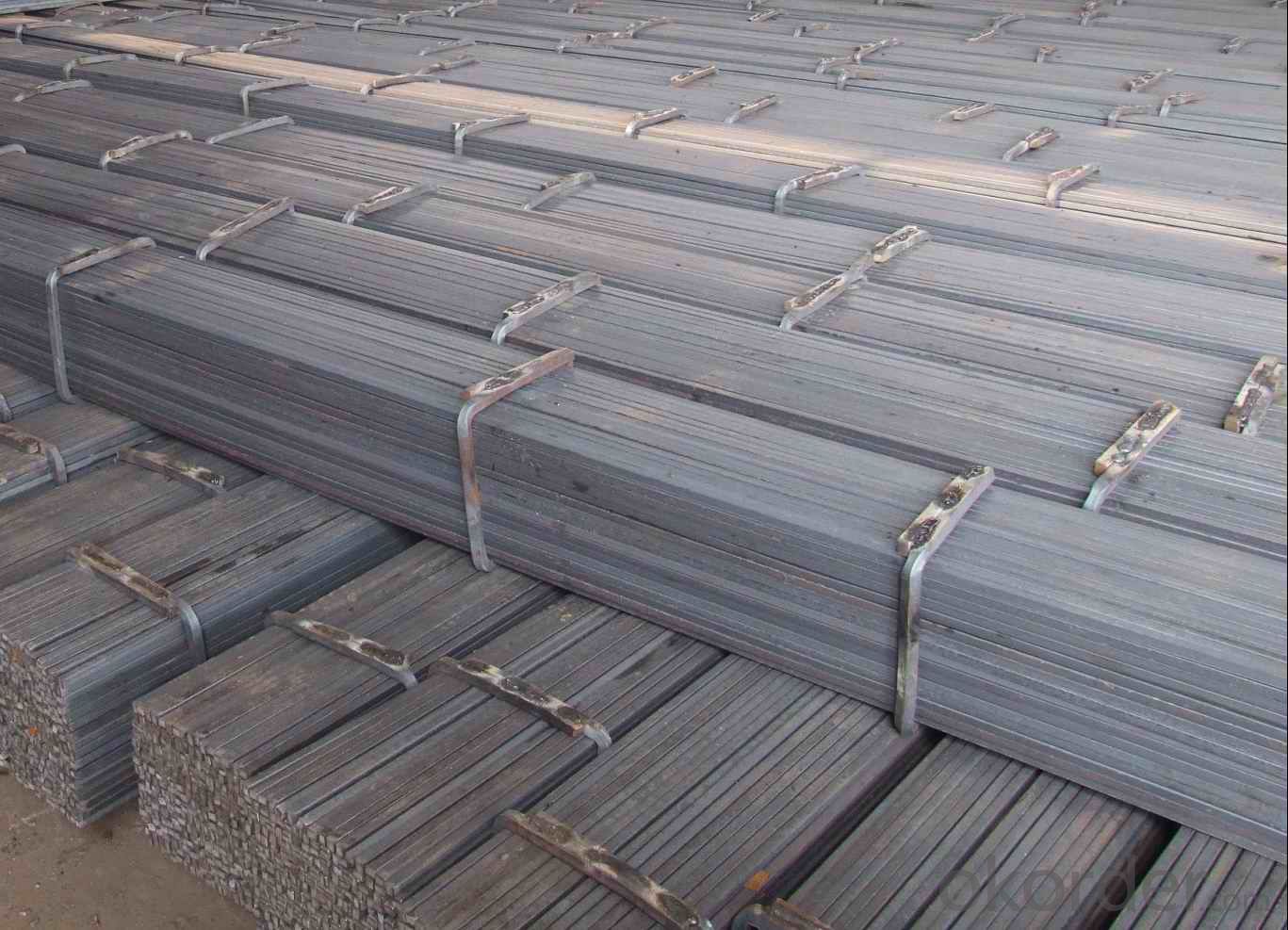
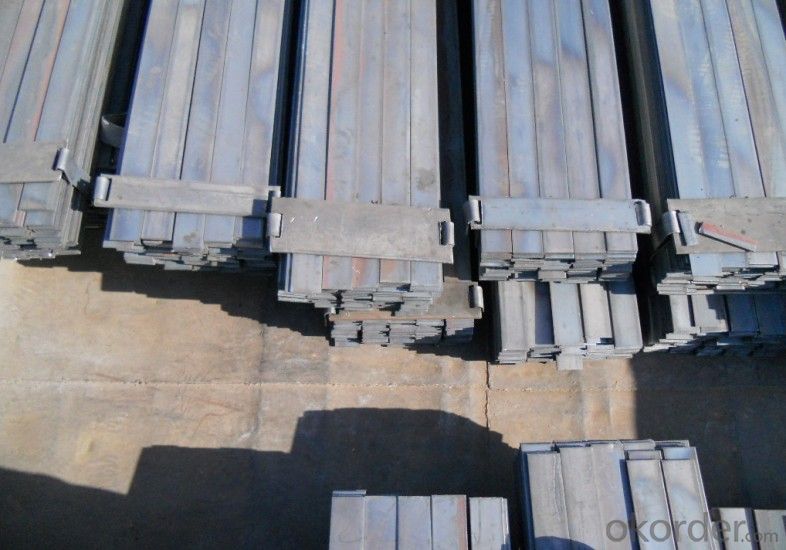
- Q: Are steel flat bars used in the construction of bridges or infrastructure?
- Yes, steel flat bars are commonly used in the construction of bridges and infrastructure. They provide structural support and stability, as well as being versatile and cost-effective. Steel flat bars are used in various applications such as beams, braces, and supports, and are known for their strength and durability, making them ideal for heavy-duty construction projects.
- Q: What are the different cleaning methods for steel flat bars?
- There are several cleaning methods for steel flat bars, including mechanical methods such as wire brushing or sanding, chemical methods such as using solvents or acids, and electrochemical methods like electrocleaning or passivation. The choice of method depends on the level of cleanliness required, the type and extent of dirt or contamination, and the specific application of the steel flat bars.
- Q: What are the different types of surface coatings for steel flat bars?
- Steel flat bars can be coated in various ways to enhance their properties and advantages. Here are some common options: 1. Zinc Galvanization: By applying a zinc layer, the steel flat bar gains protection against rust and corrosion. This makes it suitable for outdoor use or in high humidity areas. 2. Utilizing Powder Coating: Powder coating is a favored choice for steel flat bars due to its durability and attractive finish. It involves spraying dry powder onto the surface and then baking it to create a smooth and hard coating. 3. Opting for Epoxy Coating: Epoxy coatings are renowned for their exceptional adhesion and resistance to chemicals. They are commonly used in industrial settings where the flat bars are exposed to harsh conditions. 4. Applying Paint Coating: Paint coatings allow for customization in terms of color and finish. They provide a protective layer against corrosion and can be easily applied using spray or brush methods. 5. Chrome Plating: Chrome plating entails depositing a thin chromium layer onto the steel flat bar. This coating offers excellent durability and corrosion resistance, making it perfect for applications that require both strength and aesthetics. 6. Employing Black Oxide Coating: Black oxide coating chemically converts the surface of the steel flat bar, resulting in a black finish. It enhances appearance and offers mild corrosion resistance. These examples represent only a fraction of the available surface coatings for steel flat bars. The choice of coating depends on specific requirements such as corrosion resistance, aesthetics, and environmental factors. It is crucial to consider the intended use and conditions in order to select the most suitable coating for steel flat bars.
- Q: Do steel flat bars have a specific grain orientation?
- Steel flat bars do not have a specific grain orientation, unlike materials like wood or certain metals. Steel does not display a visible grain structure. It is an alloy primarily composed of iron and carbon, as well as other elements. The microstructure of steel consists of small crystals called grains. However, these grains are randomly positioned in steel, resulting in no specific direction or pattern of grain orientation in flat bars. This random grain structure contributes to the isotropic properties of steel, ensuring equal strength and durability in all directions.
- Q: Are steel flat bars suitable for making toolboxes?
- Yes, steel flat bars are suitable for making toolboxes. Steel is a durable and strong material, making it ideal for constructing toolboxes that need to withstand heavy loads and provide protection for tools. Steel flat bars can be easily welded together to create a sturdy and secure structure for the toolbox. Additionally, steel is resistant to corrosion, which is beneficial for toolboxes that may be exposed to moisture or harsh environments. Overall, steel flat bars are a reliable and practical choice for making toolboxes.
- Q: How do you prevent steel flat bars from scratching or damaging surfaces?
- One way to prevent steel flat bars from scratching or damaging surfaces is by applying a protective covering or padding to the areas in contact with the bars. This can be done using materials such as felt, rubber, or foam. Additionally, using a lifting device or handling the bars with care can help minimize the risk of scratching or damaging surfaces.
- Q: What are the different methods of surface polishing for steel flat bars?
- Steel flat bars can be polished using various methods, each offering unique advantages and applications. 1. Grinding: A commonly employed technique, grinding utilizes an abrasive wheel or belt to eliminate material from the surface, achieving the desired finish. It is ideal for rough polishing or the removal of imperfections. 2. Buffing: This method involves using a soft cloth wheel or pad in conjunction with a polishing compound to smooth and enhance the steel's surface. It is often utilized to achieve a glossy finish in industries like automotive or jewelry manufacturing. 3. Sanding: By utilizing abrasive sandpaper or sanding belts, sanding effectively smoothens the steel surface. It is particularly effective in eliminating scratches or blemishes and can be done manually or with power tools. 4. Electropolishing: This electrochemical process employs an electric current and electrolyte solution to remove surface material, resulting in a polished and corrosion-resistant finish. It is commonly used on stainless steel flat bars due to its cleanliness and effectiveness. 5. Vibratory Polishing: By utilizing a vibratory tumbler or bowl filled with abrasive media, this method removes burrs, smoothens edges, and achieves a consistent finish. It is suitable for mass production or polishing small and intricate parts. 6. Chemical Polishing: Complex shapes or delicate parts can benefit from chemical polishing, which involves using a chemical solution to dissolve a thin layer of the steel surface, resulting in a smooth and polished finish. It is an ideal alternative when mechanical polishing is impractical. It is important to consider factors such as the desired finish, level of imperfections, material composition, and intended application of the steel flat bars when selecting the most suitable method of surface polishing.
- Q: What is the maximum length of a steel flat bar?
- The length of a steel flat bar can differ based on various factors like the manufacturing process, available resources, and transportation restrictions. Generally, steel flat bars are commonly found in standard lengths between 6 to 12 meters (20 to 40 feet). These lengths are frequently chosen for their convenience in handling, storage, and transportation purposes. In certain situations, it is feasible to produce or obtain longer steel flat bars, but their availability may be limited and necessitate special arrangements for handling and transportation.
- Q: Are steel flat bars suitable for indoor applications?
- Steel flat bars are indeed suitable for indoor applications. They possess great versatility and durability, rendering them perfect for numerous indoor purposes. Their utilization ranges from construction and manufacturing to furniture making and more. Notably, these flat bars provide exceptional strength and stability, making them capable of supporting heavy loads and offering structural reinforcement. Furthermore, their resistance to corrosion and ability to withstand harsh indoor environments make them exceedingly reliable. To top it off, steel flat bars can be effortlessly personalized and fabricated to meet specific project needs, thus making them a highly favored option for indoor applications.
- Q: What are the common surface treatments for steel flat bars?
- The common surface treatments for steel flat bars include hot-dip galvanizing, powder coating, painting, and electroplating.
Send your message to us
Slit Cutting Flat Bar in Q235B with High Quality and Best price
- Loading Port:
- Tianjin
- Payment Terms:
- TT OR LC
- Min Order Qty:
- 25 m.t.
- Supply Capability:
- 10000 m.t./month
OKorder Service Pledge
OKorder Financial Service
Similar products
Hot products
Hot Searches
Related keywords
